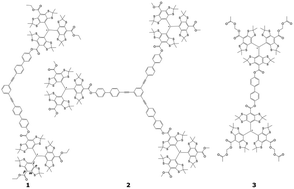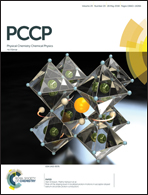Performance of PELDOR, RIDME, SIFTER, and DQC in measuring distances in trityl based bi- and triradicals: exchange coupling, pseudosecular coupling and multi-spin effects†
Abstract
Electron paramagnetic resonance (EPR) based distance measurements in combination with site directed spin labeling is an important method for determining biomolecular structures and their conformational changes. Commonly used spin labels are nitroxides but trityl radicals are emerging as a new type of spin labels specifically for distance measurements. Here, a systematic evaluation is presented for the performance of different EPR pulse sequences for measuring inter-spin distances using trityl labels. The model systems used are two bistrityl and one tristrityl molecule. One bistrityl molecule has a long spin–spin separation and serves as a reference, the second one has a short inter-spin distance serving as a model case for strong and intermediate coupling and the third is a model for the influence of multi-spin effects. Experimental and theoretical approaches to cope with the effects are presented and evaluated.



 Please wait while we load your content...
Please wait while we load your content...